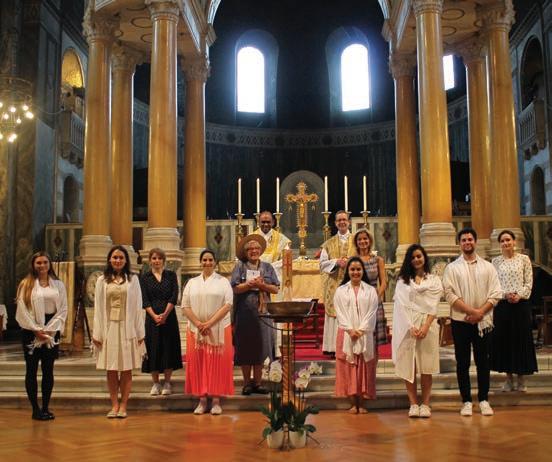BOOK REVIEW
John Francis Bentley, Architect of Westminster Cathedral, Peter Howell; Historic England (Architectural History Series) and the Victorian Society, London 2020; pp 176, paperback and ebook; ISBN 9781789621990 (pb), 9781800346734 (eb); £30 (printed) Roderick O’Donnell Fra Angelico, Raphael and Michelangelo were in their lifetimes dubbed beato, santo and divino respectively. Fra was officially beatified only in 1982. But what of architects: must this necessarily practical art preclude sanctity? The ‘cause’ for Antonio Gaudi is well advanced, but he was the least practical of architects, as his Sagrada Familia in Barcelona shows. What of J F Bentley (1839-1902) the architect of Westminster Cathedral, on which he lavished the last seven years of his life? He and his wife – they had 11 children – were both converts. As such he was denied the cursus open to Protestant architects, and in fact built only one Anglican church. For the Catholics, he built much less than the over-busy Hansoms or Pugins. Beginning with minor works, such as the font (1863) at St Francis, Pottery Lane, (in which he was re-baptised by Cardinal Wiseman), he had to wait 14 years for his first church commission, St Mary, Cadogan Street in Chelsea (1877-79). When in control of the decorative arts, such as metalwork, painting and stained-glass, as at the Perpetual Succour chapel at the Clapham Redemptorist church (1883-87), he achieved a dream-like consistency of colour and line, as seen supremely at his masterpiece, the church of the Holy Rood Watford (1889-1900). Bentley also achieved some striking secular work, such the austere Sacred Heart High School, Hammersmith (1876-88), the richly eclectic Jesuit prep school, St John’s, Beaumont (18878), and the exquisite Venetian interiors (1874-9) of Carlton Towers, Yorkshire, now a seat of the Duke of Norfolk. He also designed over 70 organ cases. The quite unexpected Cathedral commission came late in Bentley’s life, direct from Cardinal Vaughan who wanted a church with a wide nave, and structure which could be decorated later, perhaps something basilican. (Newman in his snipping against Pugin’s Gothic Revival had suggested just such a building type).Taking an Italian tour, Bentley worked out an eclectic style based on ‘the earliest Christian architecture’- which we call Early Christian – the ‘Greek,’ the Lombardic, the Romanesque, with even teasing Renaissance details. The missing element is the Gothic, since Vaughan intended to ‘gas-light’ the nearby Westminster Abbey. With its ambitious liturgy and internationally famous choir, the Cathedral has set the highest standards for English Catholicism since its opening in 1903. The Cathedral’s red brick and Portland stone exterior was chosen to blend in with the surrounding mansion flat blocks. 6
But its interior – exposed brick piers, arches and vaults on the scale of Roman engineering – is something much more mysterious and symbolist. The architect W A Lethaby – author of a book on Hagia Sophia – defined it as: ‘simply seen and directly constructed ... monumental ... the natural law of structure’, that is, its construction rather than its style. That structure is of load-bearing brick arches and piers supporting domes, three in the nave and one more over the sanctuary, Byzantine forms indeed. But the plan of the church is not Byzantine, nor even basilican, but a Latin Cross, with lateral side chapels, transepts and an apsed east end over a crypt. Bentley’s cathedral was not intended as genuflection to Byzantium – still less to the then Greek Church – but to the place of the Catholic church in England and Wales within Oremus
November 2020



















